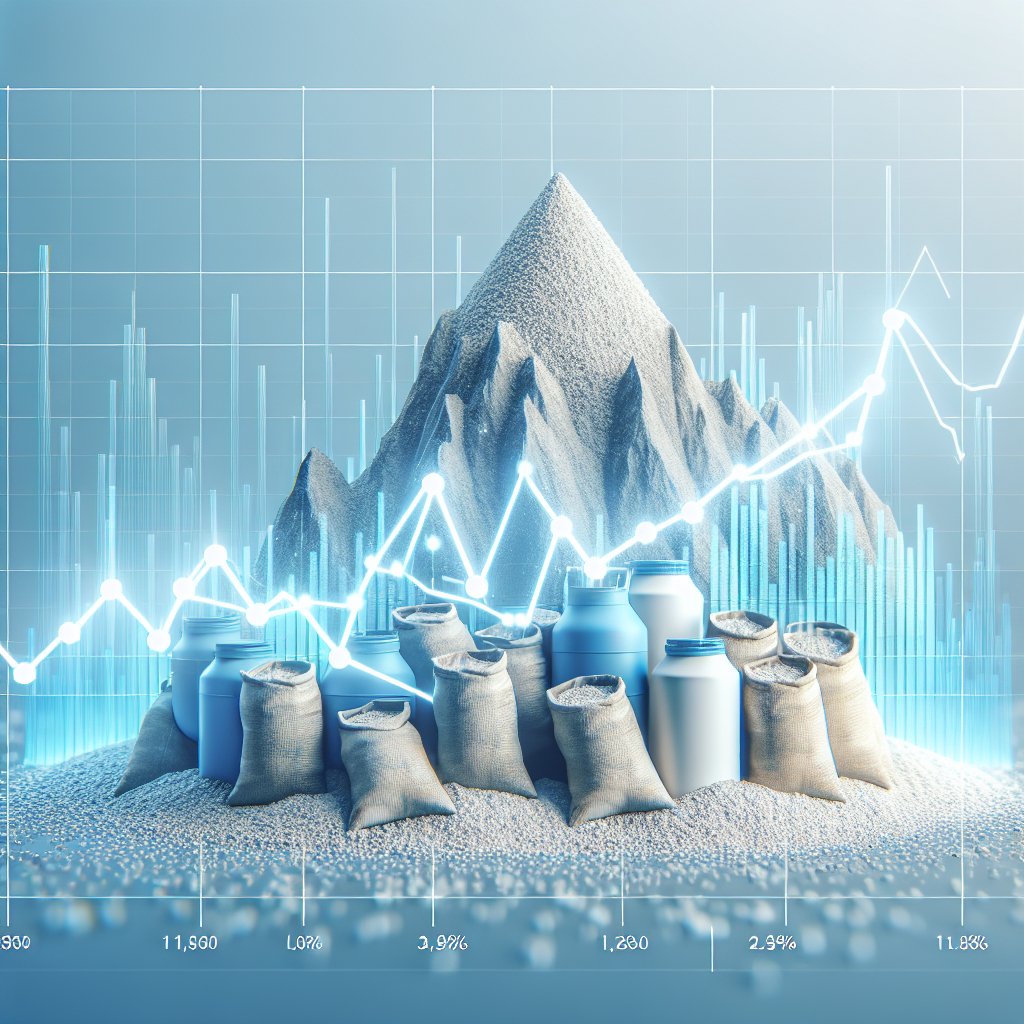The question of whether fertilizer prices have peaked is a pressing concern for farmers, agronomists, and policymakers alike. As the agricultural sector grapples with fluctuating input costs, understanding the dynamics of fertilizer pricing becomes crucial for ensuring food security and sustainable farming practices. This article delves into the factors influencing fertilizer prices, the current market trends, and the potential future outlook for this essential agricultural input.
Factors Influencing Fertilizer Prices
Fertilizer prices are influenced by a myriad of factors, ranging from global supply and demand dynamics to geopolitical events and environmental regulations. Understanding these factors is essential for stakeholders in the agricultural sector to make informed decisions.
1. Global Supply and Demand
The fundamental principle of supply and demand plays a significant role in determining fertilizer prices. When demand for agricultural products rises, farmers tend to increase their use of fertilizers to boost crop yields. Conversely, if there is a surplus of agricultural products, the demand for fertilizers may decline, leading to lower prices.
- Crop Yields: Higher crop yields often correlate with increased fertilizer usage. In recent years, the global population has been growing, leading to a surge in food demand. This has prompted farmers to invest more in fertilizers to enhance productivity.
- Weather Conditions: Adverse weather conditions, such as droughts or floods, can significantly impact crop yields and, consequently, the demand for fertilizers. For instance, a poor harvest may lead to reduced fertilizer consumption in the following planting season.
- Global Trade Policies: Trade agreements and tariffs can also affect fertilizer prices. For example, if a major fertilizer-producing country imposes export restrictions, it can lead to supply shortages and increased prices globally.
2. Geopolitical Events
Geopolitical tensions can disrupt the supply chain of fertilizers, leading to price volatility. Events such as conflicts, sanctions, or trade disputes can hinder the production and distribution of fertilizers, causing prices to spike.
- Conflict Zones: Regions affected by conflict may see a decline in agricultural production, which can lead to increased demand for fertilizers in neighboring areas, driving up prices.
- Sanctions: Economic sanctions imposed on fertilizer-exporting countries can restrict supply, leading to higher prices in the global market.
3. Environmental Regulations
As concerns about environmental sustainability grow, many countries are implementing stricter regulations on fertilizer usage. These regulations can impact production costs and, subsequently, prices.
- Emission Standards: Stricter emission standards for fertilizer production can increase operational costs for manufacturers, which may be passed on to consumers in the form of higher prices.
- Organic Alternatives: The rising demand for organic farming practices has led to an increase in the production of organic fertilizers. While this shift can be beneficial for the environment, it may also lead to higher prices for conventional fertilizers due to reduced demand.
Current Market Trends
Analyzing the current market trends provides insight into whether fertilizer prices have indeed reached their peak. Recent data indicates a complex landscape influenced by various factors.
1. Price Fluctuations
Fertilizer prices have experienced significant fluctuations over the past few years. After a period of rising prices, there have been signs of stabilization in certain regions. However, this stabilization is not uniform across all types of fertilizers.
- Nitrogen Fertilizers: Prices for nitrogen-based fertilizers have seen a notable increase due to rising natural gas prices, which are a key input in their production. However, recent trends suggest a potential leveling off as natural gas prices stabilize.
- Phosphate and Potash: Prices for phosphate and potash fertilizers have also been volatile, influenced by global supply chain disruptions and changing demand patterns. Some analysts predict that these prices may continue to rise due to limited production capacity in key exporting countries.
2. Regional Variations
Fertilizer prices can vary significantly by region, influenced by local supply and demand dynamics, transportation costs, and market access.
- Developed vs. Developing Countries: In developed countries, farmers often have better access to a variety of fertilizers, leading to more competitive pricing. In contrast, farmers in developing countries may face higher prices due to limited access and infrastructure challenges.
- Local Production: Regions with local fertilizer production facilities may experience lower prices compared to those reliant on imports, which are subject to global market fluctuations.
3. Future Outlook
The future outlook for fertilizer prices remains uncertain, with several factors at play. While some analysts believe that prices may stabilize or even decline in the short term, others caution that underlying issues could lead to further increases.
- Technological Advancements: Innovations in fertilizer production and application may help reduce costs and improve efficiency, potentially leading to lower prices in the long run.
- Climate Change: The impact of climate change on agricultural practices and crop yields could create additional demand for fertilizers, putting upward pressure on prices.
Conclusion
In conclusion, the question of whether fertilizer prices have peaked is complex and multifaceted. While there are signs of stabilization in certain markets, various factors, including global supply and demand dynamics, geopolitical events, and environmental regulations, continue to influence prices. Stakeholders in the agricultural sector must remain vigilant and adaptable to navigate the ever-changing landscape of fertilizer pricing. As the world faces increasing food demand and environmental challenges, understanding these dynamics will be crucial for ensuring sustainable agricultural practices and food security for future generations.




